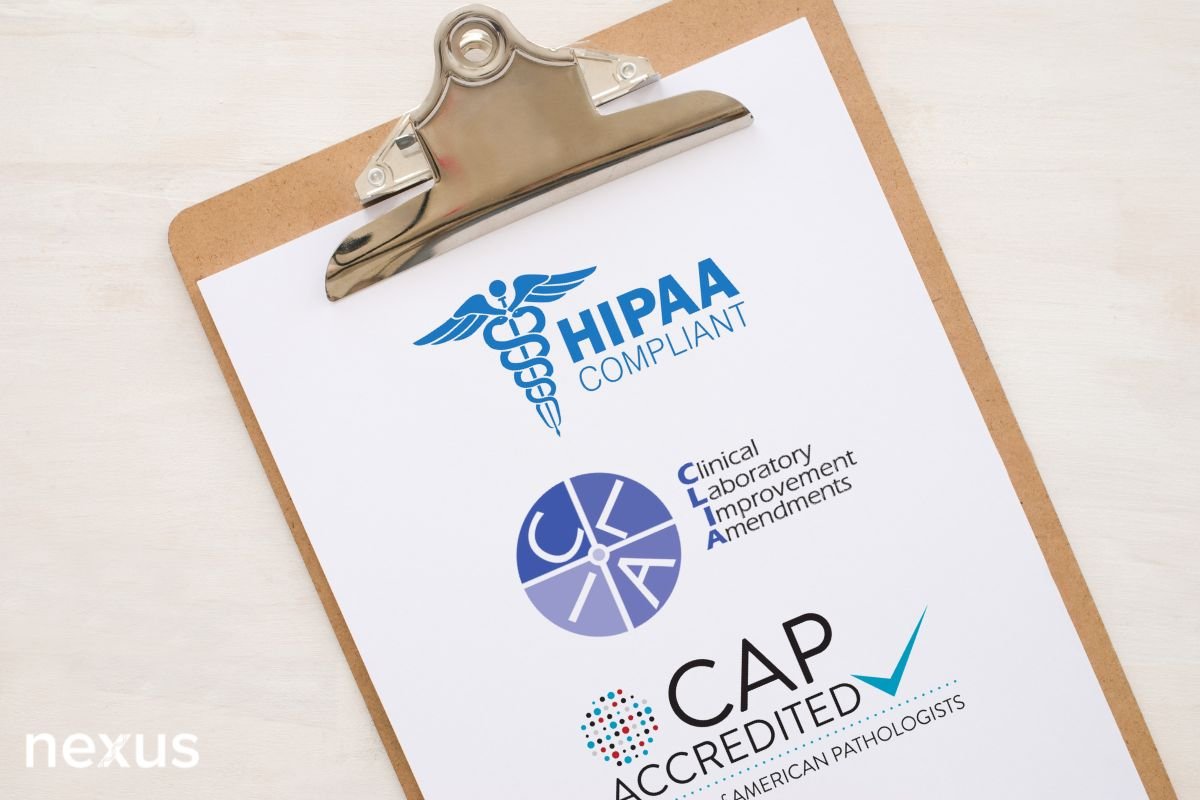10 Key Questions to Ask Before Switching Lab Partners
Why Switching Labs Can Be Complex – and Why It Is Worth Considering
Changing your diagnostic lab partner is not a decision you make overnight. Your lab plays a crucial role in patient care, clinical operations, and research initiatives. Switching means introducing uncertainty into well-established processes, from workflows and reporting to data integration and logistics. Yet, many healthcare organizations reach a tipping point where staying with the status quo becomes the bigger risk.
Slow turnaround times. Limited scalability. Outdated systems. These are just a few common pain points. In fact, over 40% of healthcare providers reviewed their lab partnerships in 2023, citing scalability and integration challenges as major concerns (Kalorama Information, 2023).
If you are thinking about evaluating new lab partners – or preparing for future growth – this checklist will help you ask the right questions. These are the conversations that lead to better decisions and stronger partnerships.
1. What Is the Lab’s Turnaround Time (TAT), and Do They Guarantee It?
Why This Matters
Fast, reliable turnaround times directly impact patient care, trial timelines, and business operations. Delays in diagnostics create bottlenecks, increase costs, and potentially affect clinical outcomes (Rehani et al., 2021).
What to Ask
What is your average TAT from sample receipt to result reporting?
Do you offer guaranteed turnaround times for priority cases?
Labs that provide Service Level Agreements (SLAs) on TAT are more reliable partners. High-throughput labs often use automation and advanced tracking systems to maintain predictable timelines (Pantanowitz et al., 2020).
2. How Scalable Are Their Testing Capabilities?
Why This Matters
Your lab needs to keep pace with your growth. Whether scaling for a new service line or managing trial expansion, capacity constraints can limit your success. Scalable labs use automation, robotics, and optimized workflows to support large volumes efficiently (Krentz et al., 2022).
What to Ask
What is your current daily testing capacity?
How do you scale in response to demand surges?
Automation can increase throughput by up to 40% without compromising quality (Badrick, 2019).
3. How Seamless Is Their Integration Process?
Why This Matters
If your lab cannot integrate with your Electronic Health Record (EHR), Laboratory Information System (LIS), or clinical trial platforms, data flow becomes a bottleneck. Poor integration can delay decisions and complicate workflows (Kuperman et al., 2018).
What to Ask
What integration options do you offer (HL7, FHIR, API)?
Can you accommodate custom data formats and reporting?
Half of healthcare IT leaders cite data integration challenges as a reason for switching labs (Bajaj et al., 2020).
4. What Regulatory Standards Do They Meet?
Why This Matters
Regulatory compliance is fundamental. Labs must adhere to CLIA, CAP, HIPAA, and relevant international standards to ensure accuracy, patient privacy, and legal operation (CMS, 2023).
What to Ask
Are you CLIA-certified and CAP-accredited?
How do you manage compliance for home-collected samples or decentralized trials?
Compliance with decentralized clinical trials requires rigorous validation and documentation processes (CAP, 2022).
5. How Transparent Are Their Pricing and Service Models?
Why This Matters
Hidden fees and unclear pricing structures can wreak havoc on budgets. Transparency ensures there are no surprises and facilitates better planning (Health Industry Distributors Association, 2022).
What to Ask
What services are included in your pricing?
Do you offer tiered pricing or volume-based discounts?
Labs that offer transparent invoicing and flexible pricing are easier to work with (Gong & Sinton, 2017).
6. Do They Offer Support for Home-Collected Samples?
Why This Matters
The rise of telehealth and decentralized trials has made home-sampling a critical offering. Labs need systems to manage kitting, logistics, and sample integrity from collection to result reporting (Miller et al., 2022).
What to Ask
Do you process home-collected samples?
How do you manage kitting, fulfillment, and chain-of-custody tracking?
The home diagnostics market is expected to exceed $10 billion by 2030 (Global Market Insights, 2023).
7. What Is Their Approach to Customer Support and Account Management?
Why This Matters
A responsive lab partner reduces friction and helps you deliver consistent service. Dedicated account managers are essential for fast issue resolution and proactive support (Tracy et al., 2018).
What to Ask
Do we have a dedicated account manager?
What are your standard response times for issue resolution?
Nearly 60% of healthcare organizations cite customer service as a top factor in lab renewals (Becker’s Healthcare, 2021).
8. Can They Support Your R&D and Custom Assay Development Needs?
Why This Matters
If you run clinical trials or offer specialized testing, you need a lab that can partner on custom assay development. Support for novel assays and validation can make or break a trial timeline (Hammerschlag et al., 2019).
What to Ask
Do you offer custom assay development and validation?
Can you support home-collection validation for new tests?
Flexible labs that offer R&D partnerships accelerate innovation (Roy & LaFramboise, 2016).
9. What Are Their Logistics and Fulfillment Capabilities?
Why This Matters
Efficient logistics and a resilient supply chain are critical for decentralized trials and home-sampling workflows. Labs must offer reliable courier services, real-time tracking, and strict chain-of-custody protocols. Equally important is a stable supply chain for collection kits, reagents, and consumables. Disruptions in supplies can delay diagnostics, impact trial timelines, and strain clinical operations (Timóteo et al., 2021). Labs with diversified vendor relationships and contingency plans can ensure consistent service delivery, even during global shortages or unexpected disruptions.
What to Ask
What logistics partners do you use for specimen transport?
Do you offer real-time sample tracking?
How do you maintain chain-of-custody?
How do you ensure consistent supply chain management for critical materials?
Do you have key partnerships with multiple vendors?
What contingency plans are in place for addressing shortages or supply chain disruptions?
Effective logistics are now considered a standard for modern labs (Dark Daily White Paper, 2021).
10. What Is Their Reputation, and Can They Provide References?
Why This Matters
A lab’s reputation reflects its reliability and quality. Look for references, case studies, and public endorsements that show successful partnerships (Crowson et al., 2019).
What to Ask
Can you provide client references or case studies?
Have you supported large-scale clinical programs or public health initiatives?
What do your partners say about working with you?
Labs that support national programs and decentralized clinical trials demonstrate their ability to scale and deliver (Lindgren et al., 2021).
Conclusion: Make the Switch with Confidence
Switching lab partners requires careful evaluation. Asking these questions helps you identify labs that offer speed, scalability, seamless integration, and compliance - while also delivering responsive service and future-proof innovation.
If you are exploring high-throughput diagnostic solutions for your healthcare organization, Nexus Medical Labs offers tailored, scalable services for forward-thinking healthcare brands.
Schedule a consultation with Nexus Medical Labs to explore how we can support your diagnostic goals.
References
Sayed, S., Cherniak, W., Lawler, M., Tan, S. Y., El Sadr, W., Wolf, N., ... & Pai, M. (2018). Improving pathology and laboratory medicine in low-income and middle-income countries: roadmap to solutions. The Lancet, 391(10133), 1939-1952.
https://www.thelancet.com/journals/lancet/article/PIIS0140-6736(18)30459-8/fulltext
Wilson, M. L., Atun, R., DeStigter, K., et al. (2018). Access to pathology and laboratory medicine services: essential diagnostics for universal health coverage. The Lancet, 391(10133), 1844-1850.
https://www.thelancet.com/journals/lancet/article/PIIS0140-6736(18)30458-6/fulltext
Stevens, W., Gous, N., Ford, N., & Scott, L. E. (2014). Feasibility of HIV point-of-care tests for resource-limited settings: challenges and solutions. BMC Medicine, 12(1), 173.
https://bmcmedicine.biomedcentral.com/articles/10.1186/s12916-014-0173-7
Sendak, M. P., D’Arcy, J., Kashyap, S., Gao, M., Nichols, M., Corey, K., ... & Balu, S. (2020). A path for translation of machine learning products into healthcare delivery. JMIR Medical Informatics, 8(7), e15182.
https://medinform.jmir.org/2020/7/e15182/
Kozyreva, V. K., Truong, C. L., Greninger, A. L., Jerome, K. R., & Roychoudhury, P. (2017). Clinical validation of whole genome sequencing for routine diagnostic testing of bacterial infections. Journal of Clinical Microbiology, 55(8), 2502-2514.
https://journals.asm.org/doi/10.1128/JCM.00361-17
Gong, M. M., & Sinton, D. (2017). Turning the page: advancing paper-based microfluidics for broad diagnostic application. Chemical Reviews, 117(12), 8443-8480.
https://pubs.acs.org/doi/10.1021/acs.chemrev.7b00024
Haberer, J. E., Sabin, L., Amico, K. R., Orrell, C., Galárraga, O., Tsai, A. C., ... & Stirratt, M. J. (2017). Improving antiretroviral therapy adherence in resource-limited settings at scale: a discussion of interventions and recommendations. Journal of the International AIDS Society, 20(1), 21371.
https://onlinelibrary.wiley.com/doi/full/10.7448/IAS.20.1.21371
Roy, S., & LaFramboise, W. A. (2016). Next-Generation Sequencing Informatics: Challenges and Strategies. Archives of Pathology & Laboratory Medicine.
https://www.researchgate.net/publication/295684512_Next-Generation_Sequencing_Informatics
Terry, M. (2021). Specimen Management and Logistics Issues to Evaluate for Continuous Quality Improvement. Dark Daily White Paper.
https://www.darkdaily.com/wp-content/uploads/White-Paper-Lab-Logistics-Specimen-Risk-Management.pdf
Timóteo, M., Lourenço, E., Brochado, A. C., & Domenico, L. (2021). Digital Management Systems in Academic Health Sciences Laboratories: A Scoping Review. Healthcare, 9(6), 739.
https://www.mdpi.com/2227-9032/9/6/739
Crowson, A. N., Harvey, M., & Stout, S. (2019). Data warehouse strategies and the modern anatomic pathology laboratory: Quality management, patient safety, and pathology productivity issues and opportunities. Seminars in Diagnostic Pathology, 36(5), 315-322.
https://www.sciencedirect.com/science/article/pii/S0740257019300553
Lindgren, C., Leinbach, A., Annis, J., Tanna, J., Zhang, N., et al. (2021). Processing laboratory considerations for multi-center cellular therapy clinical trials: a report from the Consortium for Pediatric Cellular Immunotherapy. Cytotherapy, 23(8), 697-706.
https://www.sciencedirect.com/science/article/pii/S146532492030904X








